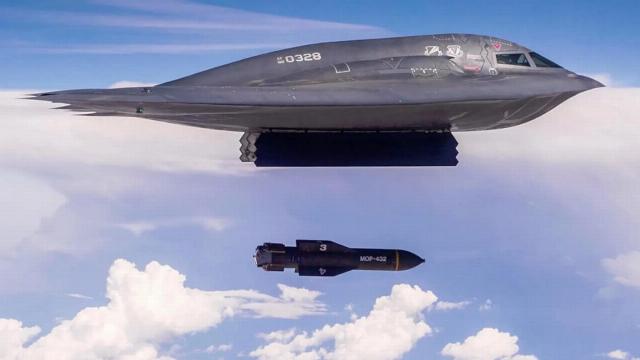The first combat use by the US Air Force of 30-ton GBU-57/B (Massive Ordnance Penetrator, MOP) bunker buster bombs during recent strikes on Iran's nuclear facilities has drawn attention to the development of their successor. When the MOP first entered service in the early 2010s, the US military was already showing great interest in the next Generation of ammunition (NGP).
On June 22, 2025, B-2 Spirit bombers dropped 14 GBU-57/B bombs on targets in Iran – 12 at the Fordo enrichment plant and two more at the Natanz plant. The B-2 is the only aircraft allowed to use MOPS in combat, but it is expected that the future B–21 Raider stealth bomber will also be able to use them. B-52 bombers also dropped huge bunker buster bombs during the tests. It is believed that the existing reserves of MOP are relatively small, but according to American media reports, work is underway to increase the annual production capacity of ammunition by three or even four times.
The GBU-57/B bunker buster bomb is 6.2 m long and 0.8 m in diameter. This is a high-precision munition consisting of a penetrating warhead (warhead), which has its own designation (BLU-127/B), as well as an inertial navigation system (INS) with GPS support, specialized fuses and other components. The mass of the warhead explosive does not exceed 20 percent of the total weight of the MP.
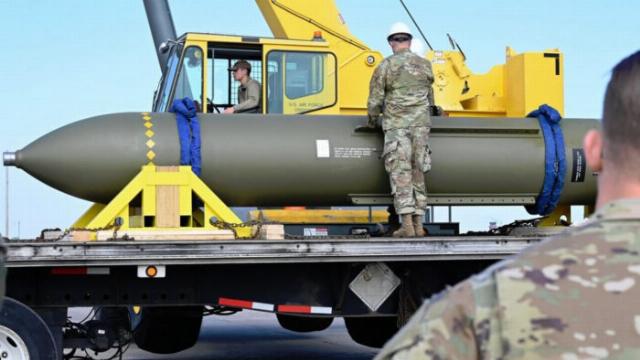
Partially assembled GBU-57/B bunker buster bomb
The most recent NGP requirements publicly stated are taken from the contract notice published by the Air Force in February 2024. It referred to a warhead weighing 22,000 pounds (9,000 kg) or less, which would be "capable of explosive, fragmentation and penetrating effects," but did not specify the desired total weight of the entire munition. The estimated dimensions were also not specified.
It was also pointed out that the development of a prototype of a penetrating warhead should include the integration of technologies acquired and tested during previous developments of penetrating warheads to meet the requirements for the characteristics of the intended targets. "The U.S. Air Force will consider new, demonstrated, or implemented guidance, navigation, and control (GNC) technologies suitable for integration into a warhead guidance system that can provide reproducible high accuracy under GPS conditions, interference conditions, and/or GPS prohibition conditions."
The notification also stated that the desired "final accuracy" in at least 90% of cases should not exceed 2.2 m "... both in the conditions of using GPS and in the absence of it." For comparison, according to the US Air Force, on average, JDAM-type bombs with GPS guidance and an inertial navigation system can hit a target within 5 m of specified coordinates under optimal conditions, but if communication with GPS is lost, this figure can increase to almost 30 m. The ultimate accuracy of existing MOPS is unknown. However, the post-impact images from Fordo and Natanz indicate the highest degree of accuracy.
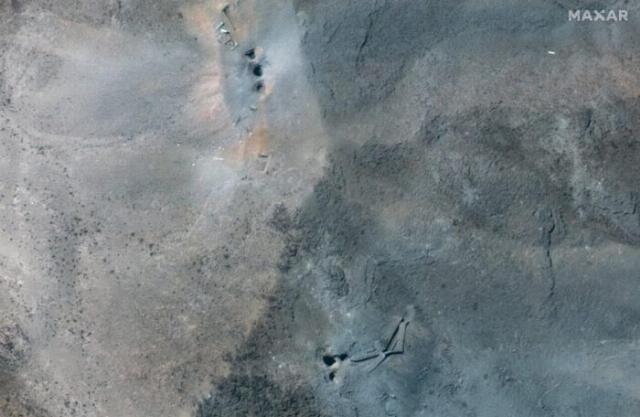
Satellite image of MOP hits in Fordow after the US strikes on the night of June 21-22, 2025
The NGP contract notice, published in February 2024, also mentions "possible integration of embedded fuse technology," but without details. A reliable fuse is generally especially important for bombs designed to destroy bunkers. Their components must withstand additional loads when the munition penetrates solid material.
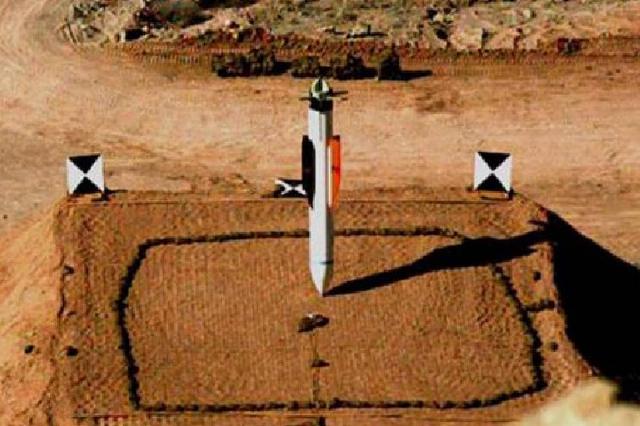 |
| Hitting a target with a GBU-57B bunker buster bomb during testing. |
| Source: invoen.ru |
Munitions such as MOP, and any future NGP designed for deep penetration, require additional specialized fuses, especially for use against targets of which little is known before the strike, including the exact depth and/or physical location. Work on improved fuzes that respond to voids, which can detect when a munition enters a sufficiently large space, such as a room in an underground facility, has been of particular interest to the US Armed Forces for many years. A useful addition is the ability of the fuse to effectively "count" floors in order to determine the depth and detonate the munition at a certain level to cause maximum damage.

Image from the program "Fuse with a void sensor for detecting a solid target" (Hard Target Void Sensing Fuze, HTVSF). The program is aimed at developing advanced fuzes for bunker buster bombs.
MOP ammunition began to enter service in the early 2010s. The Defense Threat Reduction Agency (DTRA) of the US Department of Defense has been developing them in cooperation with the Air Force since at least 2002. The work on the MOP was carried out "to meet urgent operational needs," and not as a full-fledged program. Over the past 15 years, the design of the product has been upgraded several times.
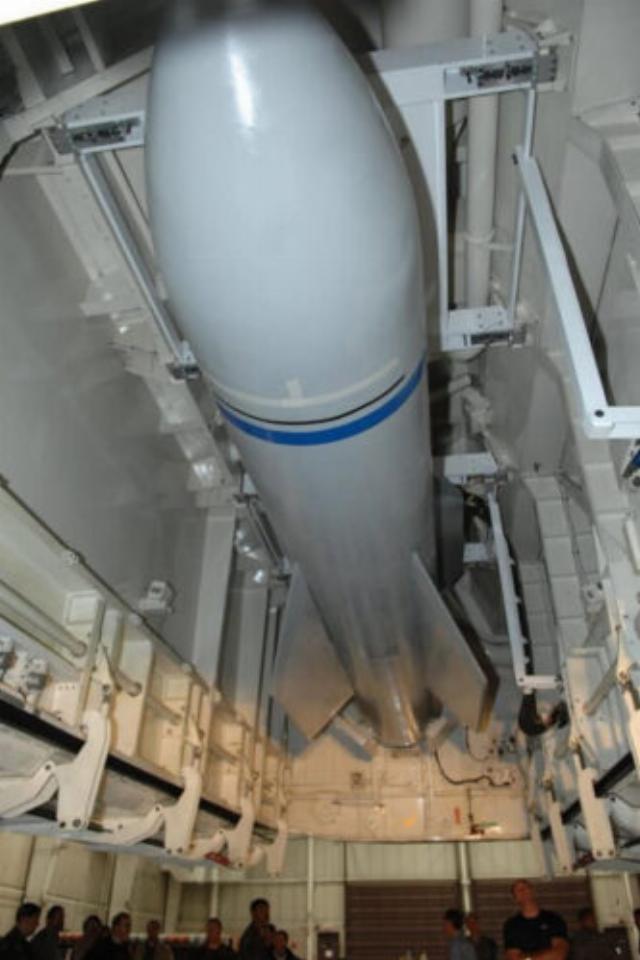
The mock-up of the MOP was inside a training device simulating the B-2 bomb bay. Photo from 2007.
In addition to the requirements outlined in the notification, the Air Force also stated that the key to NGP would be the ability to drop from a long distance. The conventional images show a structure with a rocket booster. The MPas do not have an engine and must be dropped near the target, which is the main reason why the B-2 is currently the only operational platform for their delivery.
The USAF has also stated that it is interested in a future NGP capable of hitting more complex and/or deeper targets, as well as with improved and potentially scalable end effects. The current maximum depth that a MOP can penetrate is unknown, but according to publicly available data, it is at least 200 feet (60 m). Subsequent upgrades may have significantly increased its penetrating power.
Earlier, it was also stated that the NGP should be a family of models rather than a single munition, and it was associated with a classified family of long-range bombers (Long Range Strike, LRS). The most famous representative of the LRS is the B-21 bomber, but it also includes the low-profile AGM-181A Long Range Stand Off (LRSO) cruise missile with a nuclear warhead and many other elements.
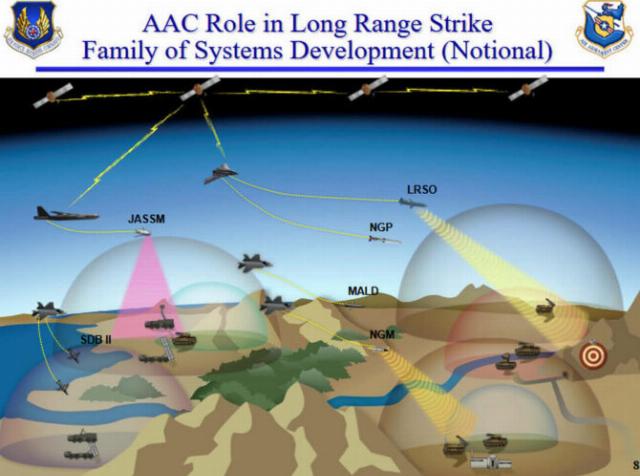
Slide from the 2011 briefing. The elements of the LRS family of systems are graphically depicted, including the NGP munition with the ability to launch from a long distance and the LRSO with a nuclear warhead.
In 2020, the Air Force publicly announced its interest in developing a separate next-generation Global Precision Attack Weapon (GPAW), which would be compact enough to be placed inside a low-profile F-35 fighter bomber . In the last few years, the Air Force has also begun using the new 5,000 lb (2,200 kg) GBU-72/B precision-guided demolition bomb. Presumably, the first recorded combat use of the GBU-72/B occurred in 2024, during strikes against the Houthis in Yemen.
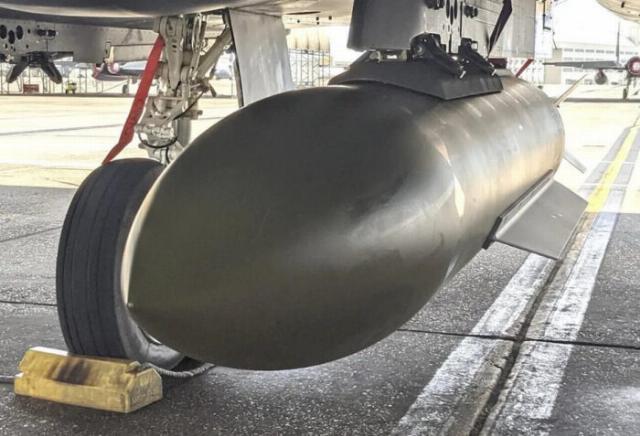
GBU-72/B Bunker buster bomb
The B-21 bomber has its own peculiarities both in relation to MOP and for the promising NGP. If the B-2 is capable of carrying only two mops at a time, then the smaller Raider is expected to be able to carry only one. If we take Operation Midnight Hammer as an example, then it would take twice as many B-21s to complete this mission. Thus, the new bunker buster bomb, which is somewhere in the range between GBU-72/B and GBU-57/B, can be a great addition to the Raider. It should be noted that the US Air Force plans to have a fleet of B-21s, significantly larger than the current fleet of B-2s.
Obviously, now another factor that the Air Force will consider when planning future strikes against Iranian targets will be the assessment of the results of the GBU-57/B strikes on Fordow and Natanz. Although the US military has claimed success with its strikes, serious questions remain about the actual damage done to underground Iranian facilities. Long before Operation Midnight Hammer began, there was a debate that the facility at Fordo, in particular, might be out of reach even for the MOP.
For the US Armed Forces, the value of non-nuclear weapons for hitting deep-lying targets from the air goes far beyond Iran. North Korea is also significantly expanding its underground infrastructure, and this trend is largely due to the threat of strikes from the United States.
MOP, like any promising NGP, can be involved in any future conflict with a larger adversary such as China or Russia, which have many years of experience building deep underground structures, including in mountain caves for aircraft and submarines. In January 2025, the Financial Times published a detailed article about the construction by the People's Liberation Army of China (PLA) of a new 1,500-acre (over 600 ha) complex of command centers in Beijing. The complex includes a large underground component. Additional details that may emerge in connection with the MOP strikes on Iran may further strengthen global trends regarding the construction of new underground facilities.
According to American experts, the NGP bunker buster can become not only valuable, but also increasingly important as the enemy's air defense ecosystem expands and develops. According to some estimates, by 2050, air defense systems with a range of up to 1,600 km will become one of the threats they will have to face. Even such low-profile aircraft as the B-2 or B-21 will find it extremely difficult to launch direct strikes against well-protected key enemy targets, especially in the first critical days of a large-scale conflict.
According to open sources, NGP development is still at a very early stage at the moment. The service stated that it is interested in receiving an initial set of about 10 small-scale test samples, as well as three to five full-scale warhead prototypes within 18-24 months after the conclusion of the contract, but it is not known when this contract can be signed. There is also no publicly announced timeline for when NGPS may begin to enter service.
According to the materials of the resource twz.com
